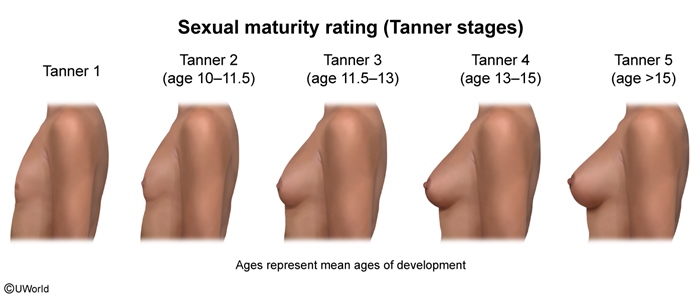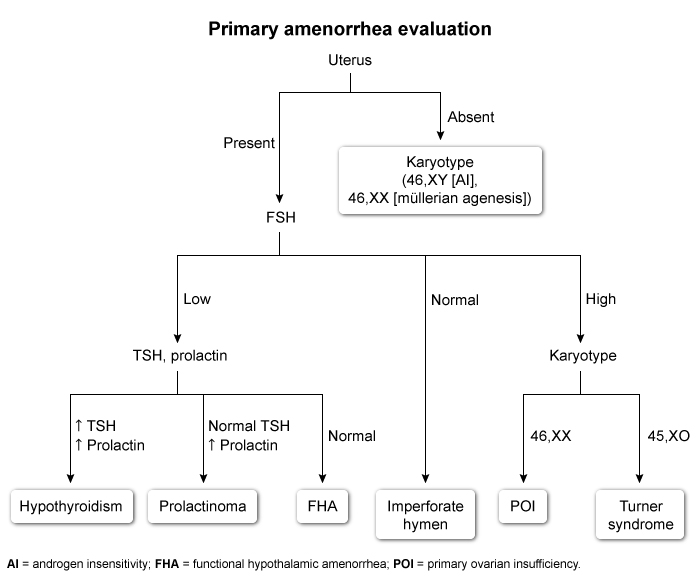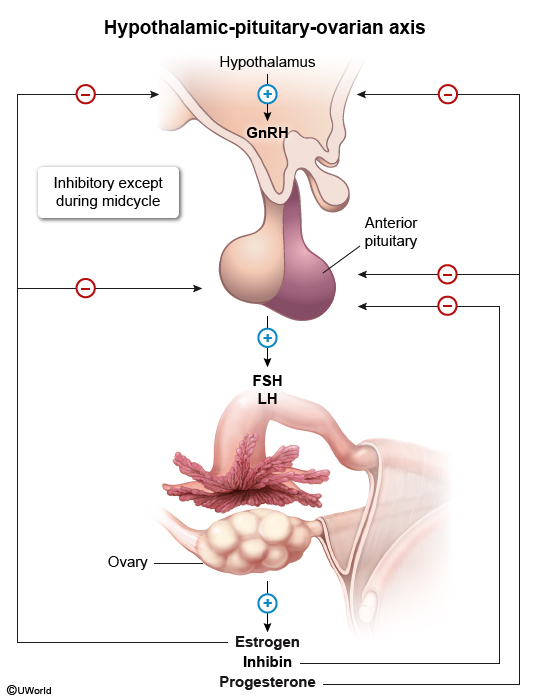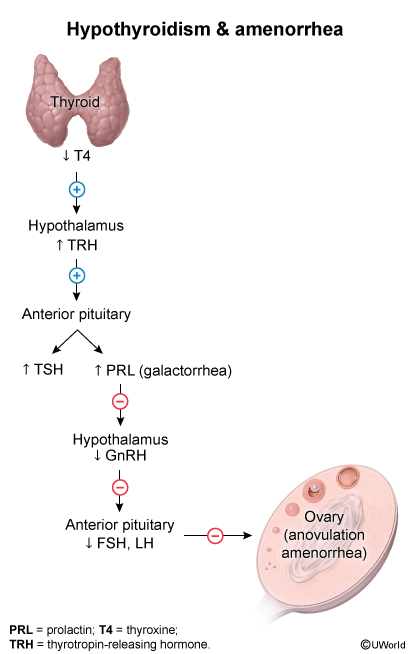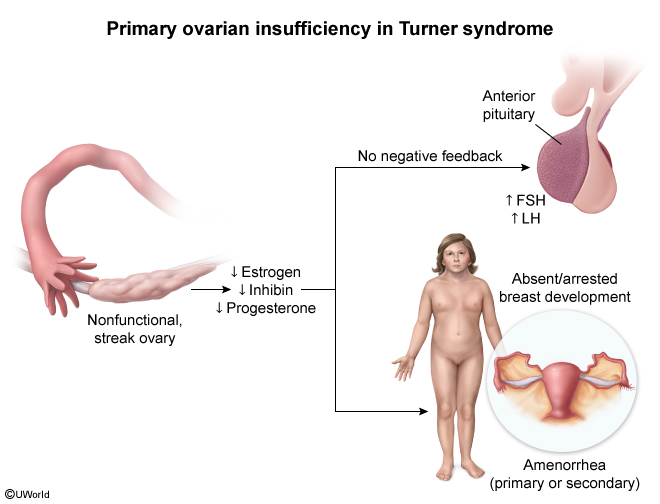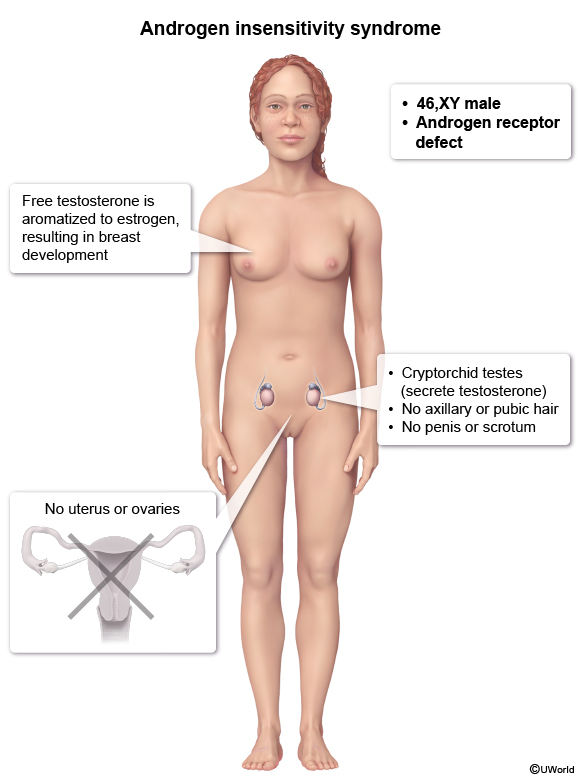Evaluation Of Primary Amenorrhea
Article Sections
Introduction
Primary amenorrhea is defined as either the absence of menarche at age ≥13 in females with no secondary sexual characteristics (eg, no breast development) or the absence of menarche at age ≥15 in females with secondary sexual characteristics. Amenorrhea can result either from functional or anatomic disorders of the hypothalamus, pituitary gland, ovaries, uterus, or vagina and from differences of sexual development.
Pathogenesis
The development of female sexual secondary characteristics and establishment of menarche begin with the onset of pulsatile GnRH secretion from the hypothalamus, which stimulates LH and FSH release from the pituitary gland and, subsequently, the production of ovarian estrogen. Adrenal androgen production also begins but is not stimulated by GnRH. Secondary sexual characteristics are driven by these hormones as follows:
- Estrogen stimulates breast development in females in early puberty and menarche in late puberty (
Continue Learning with UWorld
Get the full Evaluation Of Primary Amenorrhea article plus rich visuals, real-world cases, and in-depth insights from medical experts, all available through the UWorld Medical Library.
Figures
